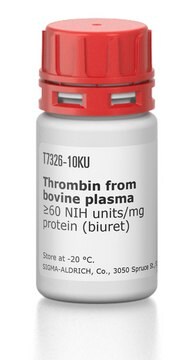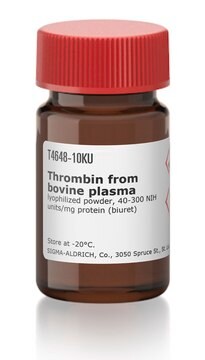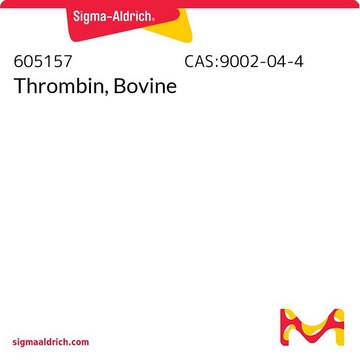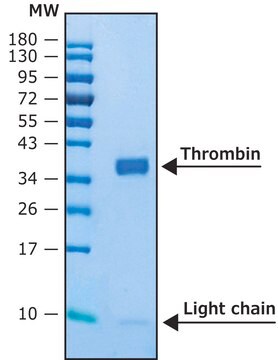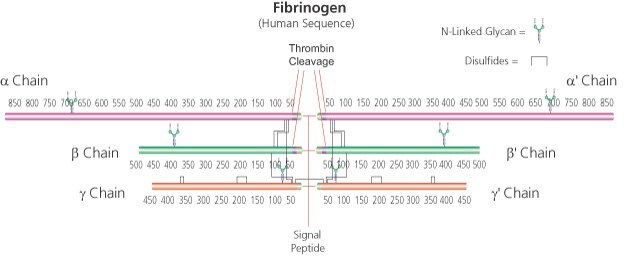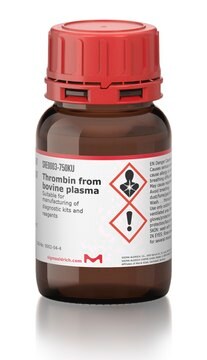SRP6556
Thrombin Active (High Activity) from bovine plasma
≥98% (SDS-PAGE), recombinant, lyophilized
Sinónimos:
Activated Factor IIa
About This Item
Productos recomendados
product name
Thrombin Active (High Activity) from bovine plasma, ≥98% (SDS-PAGE)
origen biológico
bovine plasma
Análisis
≥98% (SDS-PAGE)
formulario
lyophilized
potencia
>1500 units/mg
mol peso
37 kDa
envase
pkg of 10,000 units
pkg of 100,000 units
pkg of 1000 units
Nº de acceso UniProt
Condiciones de envío
wet ice
temp. de almacenamiento
−20°C
Información sobre el gen
bovine ... F2(280685)
Descripción general
Acciones bioquímicas o fisiológicas
Forma física
Reconstitución
Código de clase de almacenamiento
11 - Combustible Solids
Clase de riesgo para el agua (WGK)
WGK 3
Punto de inflamabilidad (°F)
Not applicable
Punto de inflamabilidad (°C)
Not applicable
Certificados de análisis (COA)
Busque Certificados de análisis (COA) introduciendo el número de lote del producto. Los números de lote se encuentran en la etiqueta del producto después de las palabras «Lot» o «Batch»
¿Ya tiene este producto?
Encuentre la documentación para los productos que ha comprado recientemente en la Biblioteca de documentos.
Los clientes también vieron
Nuestro equipo de científicos tiene experiencia en todas las áreas de investigación: Ciencias de la vida, Ciencia de los materiales, Síntesis química, Cromatografía, Analítica y muchas otras.
Póngase en contacto con el Servicio técnico